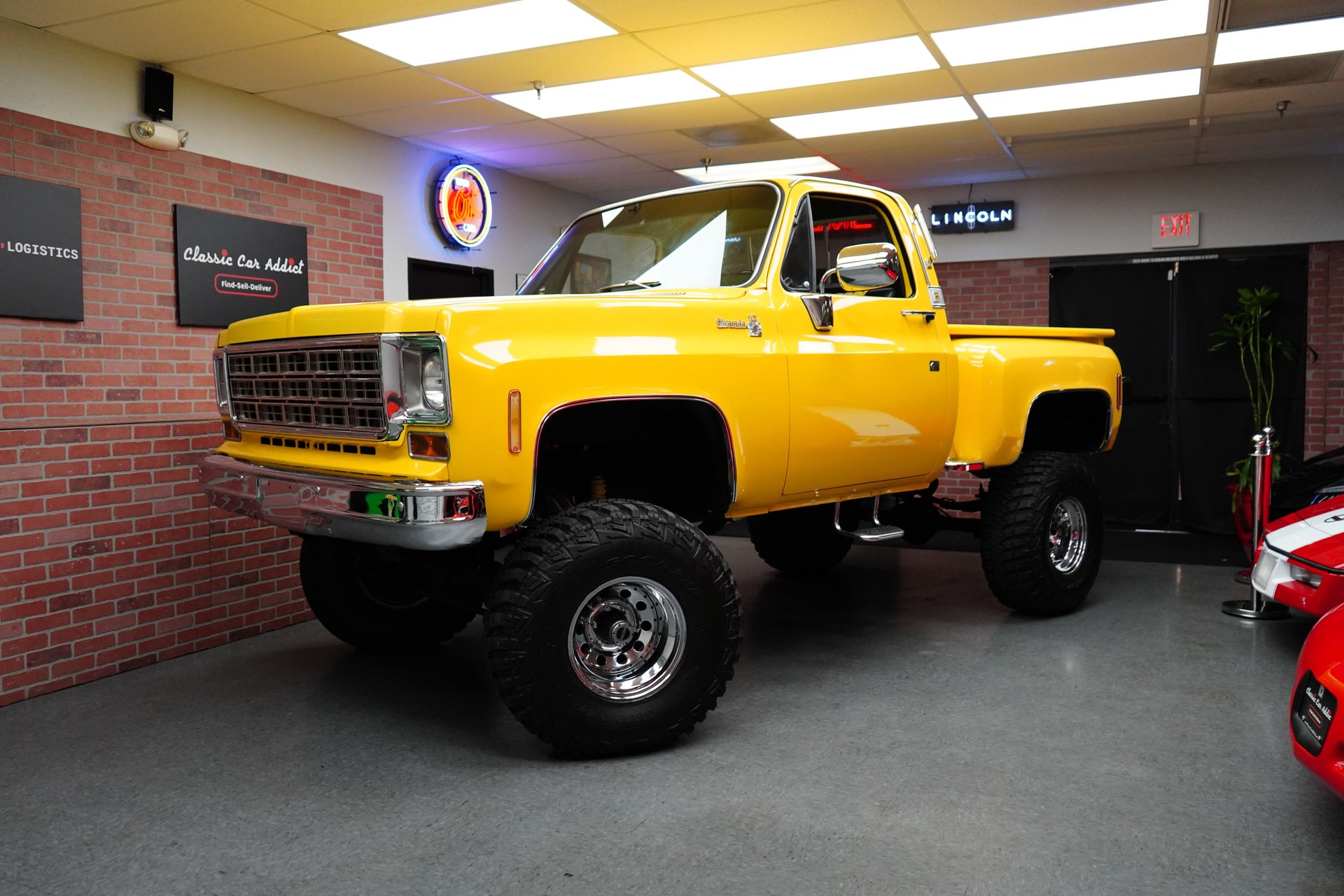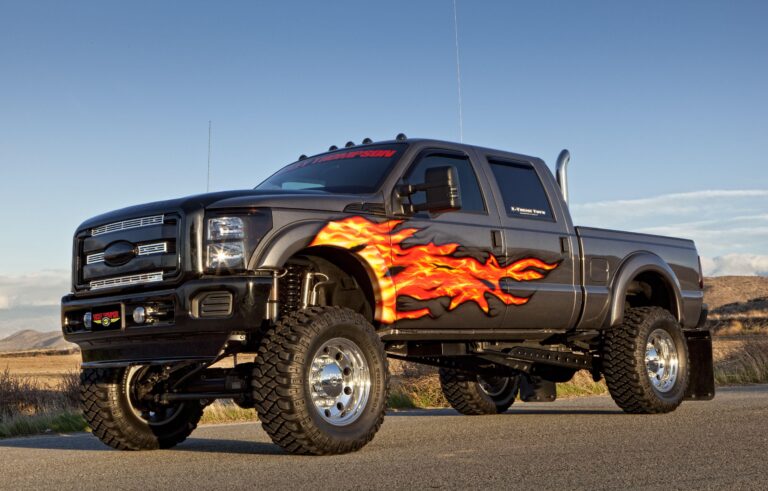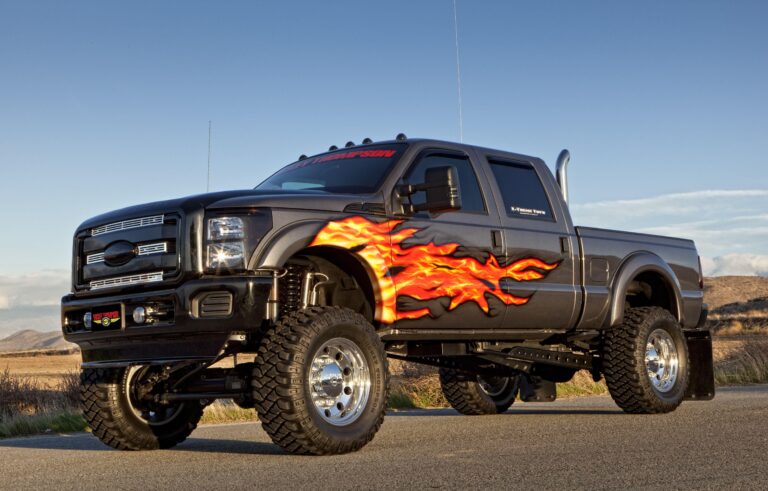1978 Chevy Trucks For Sale: Your Comprehensive Guide to Owning a Square Body Icon
1978 Chevy Trucks For Sale: Your Comprehensive Guide to Owning a Square Body Icon cars.truckstrend.com
In the vast landscape of classic American automobiles, few vehicles command the enduring affection and widespread appeal of the Chevrolet C/K series, affectionately known as the "Square Body." Among these revered machines, the 1978 Chevy truck holds a special place, representing a sweet spot in its production run. More than just a utility vehicle, the 1978 Chevy truck is a symbol of American ruggedness, a testament to timeless design, and a highly sought-after piece of automotive history. For enthusiasts, collectors, and those seeking a unique daily driver or a rewarding restoration project, understanding the nuances of finding and owning a 1978 Chevy truck for sale is paramount. This comprehensive guide will navigate you through everything you need to know about these iconic pickups, from their enduring appeal to practical buying advice.
The Enduring Appeal of the 1978 Chevy Square Body
1978 Chevy Trucks For Sale: Your Comprehensive Guide to Owning a Square Body Icon
The Chevrolet C/K "Square Body" generation, produced from 1973 to 1987, is celebrated for its distinctive boxy silhouette, robust construction, and versatile nature. The 1978 model year, specifically, benefits from being past the initial design quirks of the early 70s but predates the more stringent emissions controls and increasing complexity of the early 80s, striking a near-perfect balance of classic aesthetics and practical drivability.
Why the 1978 Model Stands Out:
- Iconic Design: The angular lines, prominent grille, and sturdy stance of the 1978 Chevy truck are instantly recognizable and evoke a strong sense of nostalgia. Its utilitarian beauty has transcended trends, making it a timeless classic.
- Built to Last: These trucks were engineered for durability. Their robust ladder frames, heavy-duty suspension components, and relatively simple mechanical systems mean they can withstand significant wear and tear, and many are still on the road today, decades after leaving the factory.
- Versatility: From a dependable workhorse to a stylish cruiser, an off-road beast, or a canvas for customizers, the 1978 Chevy truck adapts to a multitude of roles. Its straightforward design makes it highly adaptable for modifications and upgrades.
- Strong Community and Parts Availability: The Square Body community is vibrant and active, offering a wealth of knowledge and support. Furthermore, due to their popularity and long production run, parts availability for these trucks is excellent, ranging from OEM replacements to aftermarket performance upgrades.
- Nostalgia Factor: For many, owning a 1978 Chevy truck is about reliving cherished memories, perhaps of a family vehicle or a truck from a bygone era that represents simpler times and American ingenuity.
Key Features and Specifications of 1978 Chevy Trucks
Understanding the various configurations available in 1978 is crucial for potential buyers. Chevrolet offered a wide array of options to suit different needs and budgets.
Models and Drivetrains:
- C-Series (2-Wheel Drive): C10 (1/2-ton), C20 (3/4-ton), C30 (1-ton). These were primarily designed for on-road utility, towing, and hauling.
- K-Series (4-Wheel Drive): K10 (1/2-ton), K20 (3/4-ton), K30 (1-ton). Built for off-road capability and demanding conditions.
- Suburban and Blazer: While not strictly "trucks" in the pickup sense, the 1978 Suburban (a full-size SUV) and Blazer (a full-size SUV/off-roader) shared the same C/K platform, engines, and many components, making them part of the Square Body family.
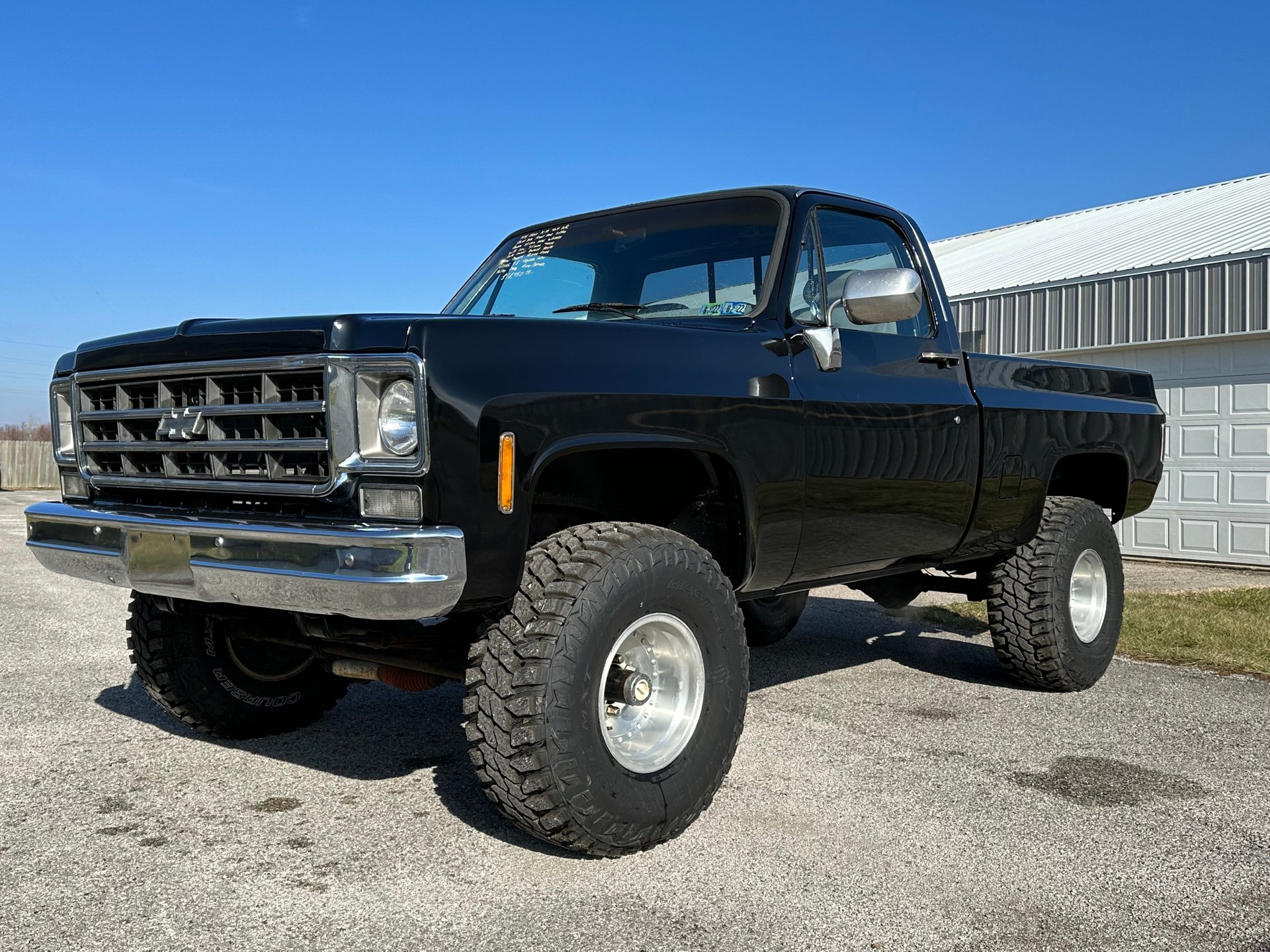
Engine Options:
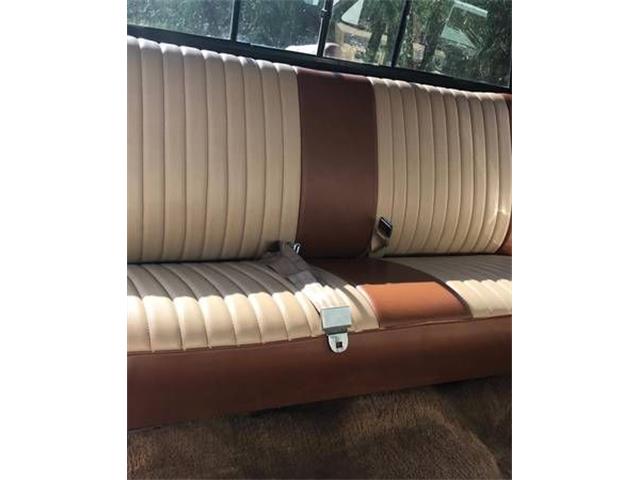
- Inline-6: The venerable 250 cubic inch (4.1L) inline-six was the base engine, known for its reliability and fuel efficiency (for the era).
- Small Block V8s:
- 305 cubic inch (5.0L): A common V8 option, offering a good balance of power and economy.
- 350 cubic inch (5.7L): The most popular and arguably the most desirable V8. It’s powerful, reliable, and has an immense aftermarket support for performance upgrades.
- Big Block V8s:
- 400 cubic inch (6.6L): Less common in 1978 trucks but still available.
- 454 cubic inch (7.4L): The ultimate power option, typically found in heavy-duty C20/C30 and K20/K30 trucks, known for massive torque.
Transmission Options:
- Manual: 3-speed (column or floor shift), 4-speed (various heavy-duty options, including the "granny gear" SM465).
- Automatic: TH350 (Turbo-Hydramatic 350) for lighter duty, and the more robust TH400 (Turbo-Hydramatic 400) for heavier applications and big block engines.
Trim Levels:
- Scottsdale: Base model, durable and no-frills.
- Cheyenne: Mid-range, adding more comfort features like improved upholstery and chrome trim.
- Silverado: Top-tier, featuring plush interiors, additional chrome, power accessories, and often more powerful engine options.
Cab Styles and Bed Lengths:
- Regular Cab: The most common configuration, seating two to three.
- Crew Cab: Rare and highly sought-after, offering four doors and seating for six.
- Bonus Cab (Extended Cab): Also rare, providing extra space behind the front seats.
- Chassis Cab: For custom upfitting (e.g., flatbeds, utility bodies).
- Short Bed (6.5 ft): Generally more popular for aesthetics and maneuverability, often commanding a higher price.
- Long Bed (8 ft): More practical for hauling and work.
Where to Find a 1978 Chevy Truck For Sale
The search for your ideal 1978 Chevy truck can be an adventure in itself. A variety of platforms and venues cater to different types of buyers and conditions of trucks.
- Online Marketplaces:
- eBay Motors: Great for a wide range of conditions, from projects to fully restored trucks.
- Craigslist & Facebook Marketplace: Excellent for finding local deals, often from private sellers. Be prepared for a mix of conditions and varying levels of transparency.
- Specialty Classic Car Websites: Sites like ClassicCars.com, Bring a Trailer (for higher-end, well-documented examples), and Hemmings Motor News list vehicles from dealers and private sellers specializing in classics.
- Square Body Forums & Facebook Groups: These communities often have "for sale" sections where members list their trucks. This can be a great source for well-maintained or enthusiast-owned vehicles.
- Classic Car Dealerships: Many dealerships specialize in vintage trucks. They often offer restored or well-maintained examples, typically at a premium, but with the added peace of mind of a professional inspection.
- Auctions: Major automotive auctions like Mecum, Barrett-Jackson, and local estate auctions can be a source for high-quality restorations or unique finds, but prices can soar, and due diligence is crucial.
- Local Classifieds & Word of Mouth: Don’t underestimate the power of local advertising or simply asking around. Many gems are still found tucked away in barns or garages.
What to Look For When Buying a 1978 Chevy Truck (Important Considerations)
Purchasing a vintage vehicle requires a thorough inspection to avoid costly surprises. Here’s a checklist of critical areas to examine:
- Rust: This is the ultimate enemy of the Square Body. Inspect thoroughly:
- Cab: Rocker panels, cab corners, floor pans, firewall, and around the windshield and rear window.
- Bed: Bed floor, inner and outer wheel wells, and bed sides.
- Frame: Crucial for structural integrity. Check for cracks, severe pitting, or previous repair attempts.
- Fenders & Doors: Lower sections and door jambs are common rust spots.
- Engine & Drivetrain:
- Engine: Check for leaks (oil, coolant), smoke from the exhaust (especially on startup or acceleration), unusual noises, and proper fluid levels. A compression test is highly recommended.
- Transmission: Smooth shifting (both manual and automatic), no grinding or slipping. For automatics, check fluid color and smell.
- Drivetrain (4×4): Engage 4WD and ensure the transfer case functions correctly. Listen for differential noise.
- Suspension & Steering:
- Check for worn bushings, ball joints, tie rods, and leaf springs.
- Excessive play in the steering wheel indicates worn steering box or linkage components.
- Brakes: Ensure the pedal feels firm and the truck stops straight. Inspect lines, calipers/wheel cylinders, and master cylinder for leaks.
- Electrical System: Test all lights (headlights, tail lights, turn signals, brake lights), gauges, horn, wipers, heater/AC, and any power accessories.
- Interior: Look for cracked dashboards (very common), torn seats, sagging headliners, and missing trim pieces.
- Documentation: A clean title is essential. Service records, original build sheets, or previous restoration receipts add significant value and peace of mind.
- Test Drive: Always test drive the truck on various roads to assess its performance, handling, braking, and any hidden issues. Listen for unusual noises.
- Pre-Purchase Inspection (PPI): If possible, have a trusted mechanic (especially one familiar with classic trucks) perform a comprehensive PPI. This small investment can save you thousands in future repairs.
Understanding the Price Range and Valuation
The price of a 1978 Chevy truck for sale varies dramatically based on its condition, rarity, location, and the seller’s motivation. It’s crucial to understand these factors to make an informed offer.
- Condition is King: This is the primary determinant of value. A truck that needs a full frame-off restoration will be significantly cheaper than a fully restored, show-quality example.
- Rarity: K-series (4×4) trucks generally command higher prices than C-series (2WD). Short bed models often fetch more than long beds. Crew Cabs and Bonus Cabs are considerably rarer and more expensive. Certain engine/transmission combinations (e.g., 454 V8 with manual transmission) can also increase value.
- Location: Prices can vary regionally, influenced by local demand and climate (less rust in dry climates).
- Modifications: Tasteful, well-executed modifications (e.g., modern engine swap, updated suspension, air conditioning) can increase value, while poorly done or highly customized work might deter some buyers.
1978 Chevy Trucks For Sale: Estimated Price Guide (USD)
| Condition Level | Price Range (USD) | Key Characteristics |
|---|---|---|
| Project Truck | $2,000 – $8,000 | Non-running or running very poorly. Significant rust (frame, body panels). Major mechanical issues. Missing parts. Requires full restoration. Suitable for experienced DIY enthusiasts or those with a large budget for professional work. |
| Driver Quality | $8,000 – $18,000 | Runs and drives, but likely has cosmetic flaws (dents, faded paint, interior wear). Minor mechanical issues might be present. Some surface rust. Can be driven as-is but will benefit from ongoing maintenance and minor repairs. Good candidate for a rolling restoration or a reliable daily driver with character. |
| Good Condition | $18,000 – $35,000 | Solid, minimal rust. Presentable paint and interior, though not perfect. All major systems are functional. May have had some restoration work or a repaint. Suitable for regular driving, local shows, or as a strong base for further improvements without needing a full tear-down. |
| Show Quality | $35,000+ | Near-flawless, often frame-off restored. Excellent paint, pristine interior, highly detailed engine bay and underside. All systems fully functional and often upgraded. Minimal to no rust. Commands top dollar and is typically purchased by collectors or serious enthusiasts for show circuits or as a prized possession. Prices can exceed $60,000+ for rare configurations or exceptional restorations. |
Note: These ranges are estimates and can fluctuate based on market demand, specific model (C10 vs K10 Crew Cab), engine, transmission, and regional variations.
Restoration vs. Daily Driver vs. Project
Before you start your search, decide on your primary goal for the truck.
- The "Project" Truck: This is the most affordable entry point. You’ll likely buy a non-running or very rough truck for a few thousand dollars. This path requires significant time, mechanical skill, and a budget for parts and potentially professional labor. It’s incredibly rewarding for those who love to wrench and see a vehicle transformed.
- The "Daily Driver": These trucks are functional, presentable, and can be used regularly. They might have some cosmetic flaws or minor mechanical quirks but are reliable enough for everyday use. Expect to pay more upfront, but your immediate investment in repairs will be lower. This is a good option for those who want to enjoy the classic truck experience without the extensive commitment of a full restoration.
- The "Restoration" / "Show Truck": These are the cream of the crop, often costing tens of thousands of dollars. They’ve either been professionally restored to concours levels or are in exceptionally original, low-mileage condition. If you want a turn-key classic that needs nothing, this is your category, but be prepared for a substantial financial outlay.
Practical Advice and Actionable Insights
- Set a Realistic Budget: Don’t just budget for the purchase price. Factor in immediate repairs, insurance, registration, and potential upgrades.
- Join the Community: Online forums (e.g., SquareBody.com, CK5.com for Blazers/K5s) and Facebook groups are invaluable resources for advice, parts, and even finding trucks for sale.
- Be Patient: Finding the right truck can take time. Don’t rush into a purchase.
- Don’t Be Afraid to Walk Away: If a truck has too many red flags or the seller isn’t transparent, it’s better to move on.
- Consider Common Upgrades: Many owners upgrade brakes (disc conversions), add modern air conditioning, install electronic fuel injection (EFI) for better reliability and efficiency, or swap in more modern transmissions (e.g., overdrive automatics). Factor these into your long-term plans.
- Insurance: Look into classic car insurance providers (Hagerty, Grundy) as they often offer better rates and agreed-upon value policies for vintage vehicles.
Frequently Asked Questions (FAQ) about 1978 Chevy Trucks For Sale
Q1: Are parts readily available for 1978 Chevy trucks?
A1: Yes, absolutely! Due to their popularity and long production run, parts availability for Square Body Chevys is excellent. You can find everything from OEM replacement parts to a vast array of aftermarket performance and restoration components online and through specialized classic truck parts suppliers.
Q2: Can a 1978 Chevy truck be a reliable daily driver?
A2: With proper maintenance and potentially some common sense upgrades (like a modern ignition system, improved cooling, or even EFI), a 1978 Chevy truck can be a surprisingly reliable daily driver. Their simple mechanical nature makes them easy to diagnose and repair.
Q3: What kind of fuel economy can I expect?
A3: Don’t expect hybrid-level mileage. Fuel economy for a 1978 Chevy truck typically ranges from 8-15 miles per gallon (MPG), depending heavily on the engine (V8s consume more than inline-6s), transmission, axle ratio, and whether it’s 2WD or 4WD.
Q4: Is it difficult to work on these trucks myself?
A4: Generally, no. These trucks are known for their mechanical simplicity and ample engine bay space, making them relatively easy for the average DIY mechanic to work on. There’s also a wealth of repair manuals, online tutorials, and community support available.
Q5: What’s the main difference between a C-series and a K-series truck?
A5: The "C" denotes 2-wheel drive, while the "K" denotes 4-wheel drive. K-series trucks typically sit higher, have a more robust suspension, and are designed for off-road capability.
Q6: Does a short bed or long bed command a higher price?
A6: Generally, short bed 2WD (C10) trucks tend to command higher prices due to their sportier aesthetics and greater appeal to customizers and collectors. However, long beds are more practical for work and can still be valuable, especially in good condition.
Q7: How much rust is too much when considering a purchase?
A7: Frame rust that compromises structural integrity (large holes, severe pitting, or multiple cracks) is a major red flag and should generally be avoided unless you’re prepared for extensive, costly frame-off restoration work. Surface rust on body panels is manageable, but extensive rust-through on cab corners, rocker panels, or floorboards will require significant repair.
Conclusion
The 1978 Chevy truck, a cornerstone of the legendary Square Body era, offers a unique blend of rugged utility, timeless style, and a tangible connection to American automotive heritage. Whether you envision it as a dedicated project, a reliable daily driver, or a show-stopping classic, acquiring one of these iconic pickups is an investment in a piece of history that continues to appreciate in value and character. With diligent research, a keen eye for detail, and a clear understanding of your goals, you can find the perfect 1978 Chevy truck for sale and embark on a rewarding journey of ownership. It’s more than just a truck; it’s a lifestyle, a conversation starter, and a testament to an era when vehicles were built to last, embody character, and capture the heart.
